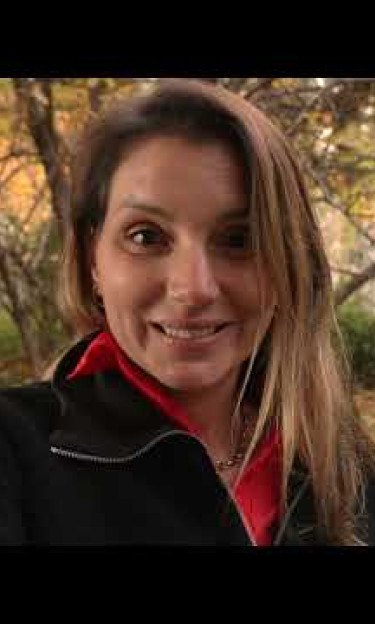News
UNESCO welcomes COP15 Global Biodiversity agreement

Negotiators meeting in Montréal, Canada, also agreed to reform US$ 500 billion of damaging environmental subsidies and to create a US$ 200 billion fund to support the implementation of national biodiversity strategies and action plans. This fund will be managed by an existing body, the Global Environment Facility.
UNESCO will be contributing to implementation of the Kunming–Montreal Global Biodiversity Framework, as the agreement is known, through its own networks of designated areas –738 biosphere reserves, 177 UNESCO Global Geoparks and 218 natural World Heritage sites – , which are growing in size each year as new sites and territories are added to these networks. They already cover a cumulative area equivalent to more than 6% of the land surface of the Earth. In the coming years, these networks plan to work more closely together than ever.
During COP15, UNESCO released a policy brief detailing how biosphere reserves could help countries to implement the area-based targets of the Convention on Biological Diversity’s Global Biodiversity Framework, as well as mainstream biodiversity conservation beyond area-based targets. UNESCO released this policy brief through its Chair on Sustainable Heritage and Environmental Management based in Norway, Dr Inger Elisabeth Måren.
UNESCO will be measuring progress towards biodiversity targets to 2030
Since regular monitoring will be crucial to measure the pace of implementation of the Kunming–Montreal Global Biodiversity Framework, UNESCO is setting up a database to enable people to follow the evolution of socio-ecological indicators and visualize land use changes in its network of designated sites.
Supported by UNESCO’s Earth Network programme and its initial donor, Italy, this database will serve notably as an information tool for the United Nations Decade of Ecosystem Restoration and the United Nations’ Decade of Ocean Science for Sustainable Development, both of which run to 2030. A pilot version of this database was launched at COP15 on 16 December. UNESCO has produced a four-minute video explaining how the database works.
The database will measure change not only with regard to biological diversity but also cultural diversity. For example, a key indicator of the relationship between nature and culture could include the diversity of languages spoken within a region, including indigenous languages.
The new database will complement the existing Ocean Biodiversity Information System (OBIS) co-ordinated by UNESCO’s Intergovernmental Oceanographic Commission (IOC). This global map of marine species houses over 100 million observations of marine species published by more than 1,000 scientists. OBIS is a source of primary data which can help countries to respect their commitments to protecting marine biodiversity.
The IOC also coordinates a global network of observation programmes which provide vital indicators on marine biodiversity, such as the area covered by mangrove forests, seagrass plains and coral reefs.
On the first day of COP15, UNESCO announced the launch of its environmental DNA sampling project. The IOC will work with local schools at every sampling site to give hundreds of schoolchildren the chance to become citizen scientists by collecting data from 25 World Heritage marine sites that will then feed into OBIS. They will do this by collecting samples of environmental DNA. This type of sampling identifies the species that live in a particular area by analysing just a couple of litres of water. The method is cost-effective and non-invasive to local wildlife.
As ocean temperatures rise, species are increasingly being forced to flee their natural homes in search of cooler waters. By understanding how biodiversity hotspots are shifting as a consequence of climate change, we can learn where to focus conservation efforts in the future.
UNESCO's MOOC : protecting biodiversity is good for your health
‘The COVID-19 pandemic showed us our interdependence with the living world’, observes Audrey Azoulay, Director-General of UNESCO. ‘Biodiversity, the climate crisis and wellbeing are all interconnected’.
The risk of pandemics is rising, with five new emergent diseases being discovered each year. Our pattern of biodiversity habitat destruction has led to a 30% upsurge in emerging diseases since 1960, according to the Biodiversity and Pandemics report published by the Intergovernmental Science-Policy Platform on Biodiversity and Ecosystem Services (IPBES) in 2020, which is supported by UNESCO, UNEP, the UNDP and FAO.
UNESCO’s Man and Biosphere (MAB) programme is launching a Massive Open Online Course (MOOC) in February which will explore solutions which link the health of the planet to that of animals and people, what is known as the ‘One Health Approach’. This course will be run by Professor Serge Morand, a renowned ecologist who is affiliated to France’s National Centre for Scientific Research (Centre national de recherche scientifique, CNRS). In the MOOC, Professor Morand will lay out the concepts, data and methodologies available globally, giving concrete examples from sites designated by UNESCO.
One case study used in the MOOC comes from Riding Mountain Biosphere Reserve in Canada. In the late 1990s, Bovine tuberculosis (TB) was detected in cattle herds and deer and elk in the area. The disease spread because elks feed on shared pastures and feed round bale feeders used by cattle. Bovine TB can also affect humans. With the goal of eradicating this disease, the biosphere reserve established a multistakeholder task force in 2000 that encompassed federal, provincial and local government agencies, cattle producers, landowners, tourism associations, Parks Canada and the regional tribal council.
The task force pooled its knowledge to make recommendations for stopping the spread of the disease: creation of barrier fences; the introduction of livestock guardian dogs to reduce contact between domestic and wild animals; deer and elk testing; and prescribed fires to regenerate prairie lands. Today, Bovine TB is no longer actively circulating in the Riding Mountain Biosphere Reserve and is being carefully monitored by the community.









